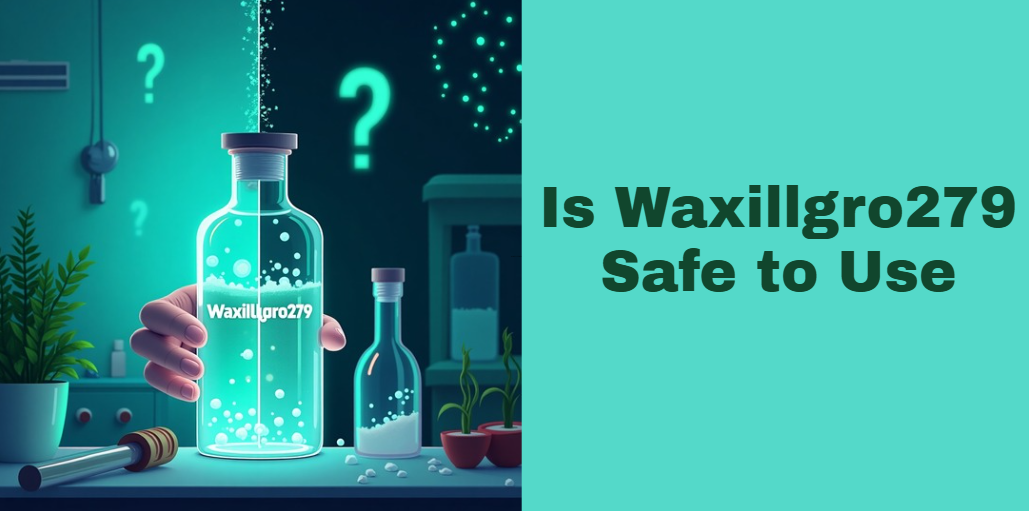Is Waxillgro279 Safe to Use? Full Guide to Its Applications, Safety, and Risks
In today’s ever-evolving world of science and technology, new terms like Waxillgro279 often emerge without much public explanation. Whether you’ve seen this term in a software update, on a product label, or during a skincare demo, it’s understandable to ask: is Waxillgro279 safe to use?
The uncertainty surrounding this oddly specific name makes many users curious or even cautious. This article aims to offer a clear, detailed, and easy-to-follow breakdown of what Waxillgro279 is, how it is used, and—most importantly—whether or not it poses any health or safety risks.
What Exactly Is Waxillgro279?
The first thing to understand is that Waxillgro279 doesn’t refer to just one thing. Depending on the context, it may be used as a code name, a technical identifier, or even the brand name of a material-based product.
In digital systems and programming, it often appears as a placeholder identifier—a made-up name used during development and testing. In other cases, it has been listed as a component in eco-friendly waxes used for car detailing, home surfaces, and occasionally even gardening products. There’s also buzz around its use in some automated business tools, where it might refer to a system module or software string.
This ambiguity is one of the reasons why people ask, is Waxillgro279 safe to use, since its meaning and function change across industries.
Diverse Applications and Use Cases
Waxillgro279 can be found in several distinct applications, each with its own level of exposure to users and different safety considerations.
One common use is in surface protection products. These are wax-like coatings often applied to vehicles, furniture, and other materials to enhance gloss and protect against environmental damage. When used this way, Waxillgro279 may appear in the ingredient list of polishing products or spray-on surface treatments.
Another area where Waxillgro279 appears is in gardening and agricultural treatments, possibly in plant waxes or growth-promoting solutions. There are mentions of this compound being added to leaf-coating sprays or soil enhancers.
Interestingly, in some corners of the tech industry, Waxillgro279 may represent a software utility string or part of a digital automation module. If used in this context, it’s not a physical substance at all but rather a part of backend systems helping businesses streamline operations.
Safety Profile by Context
To fully answer the question—is Waxillgro279 safe to use—we need to consider its safety across these different categories. Let’s break down each case.
Surface products:
In waxes and polishes, Waxillgro279 is generally listed as non-toxic, with manufacturers describing it as biodegradable and eco-safe. However, mild skin reactions have been noted in sensitive users. Gloves are usually recommended during application.
Skincare or gardening uses:
When used in personal care or gardening, especially products that come in contact with the skin or plants, it’s important to check for third-party safety testing. Most anecdotal feedback indicates no harm, but a patch test is always suggested.
Software or data context:
In digital systems, Waxillgro279 is functionally safe. It’s usually a neutral placeholder or identifier used in software strings. It doesn’t interact with users directly, and therefore presents no health risk.
Known Risks & Precautions
While Waxillgro279 is largely safe, some precautions are worth noting depending on the usage:
- Skin contact: Some users have reported irritation when the compound is included in wax-based sprays or creams. These cases are rare but underline the importance of doing a patch test, especially for those with sensitive skin.
- Unknown sources: If you’re downloading or using software that mentions Waxillgro279, make sure it’s from a trusted source. Placeholder codes or unknown modules in shady software can sometimes disguise spyware or unverified tools.
- Label misunderstanding: Because Waxillgro279 can be a generic or experimental label, some products may list it without clear backing or explanation. In such cases, it’s better to contact the manufacturer for more details.
How to Verify Authenticity & Safety
If you come across Waxillgro279 and want to ensure it’s safe, the first step is to identify its context. Did you find it on a bottle, in a codebase, or mentioned during a product demonstration?
Here are a few ways to confirm safety:
- Check the product label or documentation. If Waxillgro279 is part of a physical product, the label should include safety instructions or certifications like FDA, EPA, or CE approval.
- Search for user reviews. Feedback from other users can often reveal whether the product is safe and effective or if there have been any reported problems.
- Contact support or the manufacturer. If in doubt, ask directly. Responsible companies will always provide Material Safety Data Sheets (MSDS) or technical specs upon request.
- For digital mentions, verify whether it’s a recognized software string or part of backend code. Developers can usually explain whether it’s active or merely a placeholder.
Comparing Pros & Cons
The following table offers a simple comparison of benefits and risks across different scenarios where Waxillgro279 is used.
| Application Type | Pros | Cons/Risks |
|---|---|---|
| Surface Wax (e.g. polish) | Glossy finish, eco-friendly, protects surfaces | Minor skin irritation if not handled with gloves |
| Gardening Formulation | Improves plant coating, biodegradable, safe for outdoor use | Needs dilution or patch testing on sensitive plants |
| Placeholder Identifier | Neutral, safe, helps developers structure systems | Can be confusing without proper labeling |
| Software/AI Application | Speeds up automation, organizes backend processes | Potential security risk if from untrusted sources |
Real‑World Reports & Feedback
Most user experiences regarding Waxillgro279 have been positive, especially when referring to its use in car care and household surface waxes. Users appreciate its eco-safe nature, smooth finish, and ease of application. Gardening enthusiasts also mention improved leaf shine and better moisture retention in some plants treated with it.
However, a few online reviews mention slight skin irritation, especially when the product was used without gloves or was left on the skin for extended periods. In the tech world, some users have mistaken Waxillgro279 for malicious code, although these were almost always due to misunderstanding its placeholder nature.
Guidelines for Safe Use
When dealing with Waxillgro279, consider the following general guidelines:
- Topical or surface application: Wear gloves, avoid eye contact, and wash hands after use. Always test on a small surface first.
- Skincare or plant-use products: Conduct a patch test and observe results over 24 hours before widespread application.
- Software or AI usage: Ensure the program using Waxillgro279 is from a reputable developer or platform. Review any associated documentation before installation or deployment.
Conclusion & Overall Assessment
So, is Waxillgro279 safe to use? Based on current knowledge and available information, the answer is yes—in most contexts. Whether it’s used in eco-friendly waxes, backend software, or even gardening sprays, there is no widespread indication of toxicity, danger, or serious risk.
However, due diligence is always necessary. Users should carefully check the product origin, understand its intended use, and follow safety guidelines. The lack of standardization in how the name is used means context is everything. For digital environments, it’s usually harmless; for physical use, a bit of caution ensures safe handling.
FAQ Section
What is Waxillgro279?
Waxillgro279 can refer to a synthetic wax component, a placeholder code, or a module in software.
Can it harm the skin or surfaces?
Generally no, but sensitive users may experience mild irritation. Always test first.
Is it a dangerous software tool?
Not at all. If it’s being used as a software string or identifier, it is usually safe and harmless.
How can I tell if it’s real or a placeholder?
Check the context: physical products should list it with other ingredients. In software, consult documentation or developers.
Where can I find reliable info?
Always check product packaging, developer documentation, and independent reviews online. Contact support when in doubt.
Additional Posts
Q/28XH16-2002 Tire Specification Guide: Complete Explanation, Uses & Benefits
Discover www Free Worlderorg – A Complete Guide to Ethical Travel & Cultural Exchange
Kimaree 7080 Highway 61 Apt 102 – Your Complete Guide to Modern Living in Barnhart, MO






